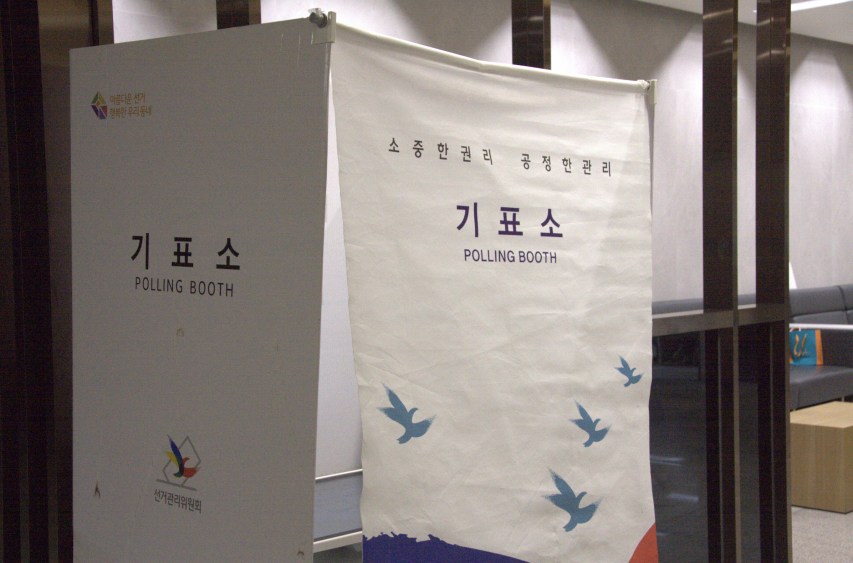[Feature] Breakthrough in Catalyst Efficiency: Converting Plastic Waste into Hydrogen at Unprecedented Rates
On February 5, 2024, professor Kim Min-ho’s research team from the Dept. of Applied Chemistry at Kyung Hee University (KHU) collaborated with Hyeon Taeg-hwan, a director of the Center for Nanoparticle Research at the Institute for Basic Science, and Lee Byoung-hoon, a professor in the Dept. of Integrative Energy Engineering at Korea University. They published their findings in the prestigious journal Nature Materials under the title Photochemical Tuning of Dynamic Defects for High-performance Atomically Dispersed Catalysts.
Their research led to the development of a catalyst that boasts the world’s highest efficiency, producing 3.7 liters of hydrogen per hour with just one gram of catalyst. When applied to the photoreforming of plastic waste, the catalyst achieved a conversion rate where 98% of the plastic was turned into hydrogen.
Advantages of ADCs and Challenges in Synthesis Process
A catalyst is a substance that mediates the chemical reactions of other substances, either increasing or decreasing the reaction rate without undergoing any change itself. Precious metal catalysts, such as platinum (Pt), exhibit excellent performance but their high cost results in poor economic feasibility for industrial-scale applications. Additionally, the structural stability of metal atoms can vary depending on the reaction conditions, often leading to underutilization of precious metal catalysts’ performance.
Prof. Kim noted that Atomically Dispersed Catalysts (ADCs), where each atom is individually dispersed, are considered a promising approach to overcome the limitations of precious metal catalysts. In ADCs, metal atoms are anchored to the surface of support materials. These support materials help stabilize and maintain moieties like single-atom catalysts, which are unstable but highly reactive, by securely adsorbing them. Furthermore, the support materials enhance features such as conductivity and light absorption, providing a synergistic effect. By transforming precious metal catalysts into ADCs, where every Pt atom is actively involved in the reaction, the utility of the catalyst can be maximized. Specifically, using only a small amount of precious metals can yield significant effects, making the process more cost-effective while enhancing performance.
However, synthesizing ADCs traditionally required a bottom-up synthesis process, which was overly complex and had significant drawbacks. This method necessitated harsh and high-temperature doping conditions and was limited to specific metal atoms and supports. To address these challenges, the researchers embarked on this study to develop a new catalyst synthesis method capable of overcoming these limitations.
Development of Synthesis Methods for ADCs
This study builds on previous research detailed in the 2019 paper titled Reversible and Cooperative Photoactivation of Single-atom Cu/TiO2 Photocatalysts. The paper discussed the design and synthesis of highly active Titanium Dioxide (TiO2) photocatalysts that incorporate site-specific single copper (Cu) atoms, demonstrating a reversible and cooperative photoactivation process. The research highlighted that this reversible and cooperative activation at the single-atom level allows for the control of macroscopic optoelectronic properties and enhances catalytic activity. Furthermore, Prof. Kim illustrated that the cooperative interplay between atomic catalysts and their adjacent environments significantly influences the overall material properties and catalytic activity.
Building on their previous study, the researchers developed a method to synthesize ADCs at room temperature only using sunlight, eliminating the need for additional electrical or thermal energy. They employed commercial oxides such as TiO2 as supports, which are inexpensive yet high-performing. These oxides contain defects known as oxygen vacancies?holes formed by the escape of oxygen atoms. When exposed to sunlight, the internal bulk oxygen vacancies migrate to the surface, where they serve as binding sites for metals, allowing the precious metal catalysts to bind uniformly to the surface of the support materials.
This innovative process was used to evaluate the performance of the newly synthesized atomically dispersed platinum-dynamically stabilized atom (Pt-Dsa)/TiO2 catalyst. As a result, they developed the world’s most efficient catalyst, capable of generating 3.7 liters of hydrogen per hour with just one gram of catalyst. They also applied this catalyst to the reaction of producing hydrogen from plastic waste. The developed catalyst demonstrated an efficiency of converting 98% of waste plastic into hydrogen over 40 hours, representing a performance more than 10 times higher than that of previously considered high-performing catalysts.
Significance of Synthesis Method Development and Subsequent Research
This study introduced a new synthesis method that allows for the eco-friendly and high-performance production of ADCs using solar energy. This method is highly efficient and universally applicable to various metal catalysts such as Pt, Cu, and iridium, as well as oxides like TiO2, zinc oxide, and cerium oxide. It offers the distinct advantage of achieving high activity and stability in catalytic reactions by forming uniform active sites. Additionally, it presents a cost-effective method for producing ADCs, potentially reducing expenses in the chemical industry significantly.
Prof. Kim predicts that proposing new combinations of metals and supports will become more advantageous, based on the theoretical mechanism established in this study. He also outlined the goal of developing even more cost-effective and efficient catalysts through further research. In line with this, the researchers anticipate that the catalysts synthesized in this study will be applicable not only in other photocatalytic reactions but also in significant thermocatalytic reactions on an industrial scale. Furthermore, they expect that the metal atoms and supports demonstrated in this study could be easily extended to other types of atoms and supports, and are actively pursuing ongoing research to explore these possibilities.
Prof. Kim noted that, as this paper represents state-of-the-art research published recently, it might take some time to progress through the stages of patenting or commercialization. However, this study is expected to significantly reduce costs in the chemical industry by enabling various syntheses based on the types of supports and metal catalysts used. Prof. Kim also highlighted that the conducive atmosphere at KHU, which facilitates collaboration with experts from various fields, played a significant role in making this study possible.
He expressed hope that students studying applied chemistry would recognize the boundless potential for its application across various research fields and continue to engage with its practical value, pursuing related fields in the future. The progression of follow-up research from this study and the diverse utilization of research in the field of applied chemistry are highly anticipated.
There are no registered comments.
- 1
- 2
- 3
- 4
- 5
I agree to the collection of personal information. [view]






